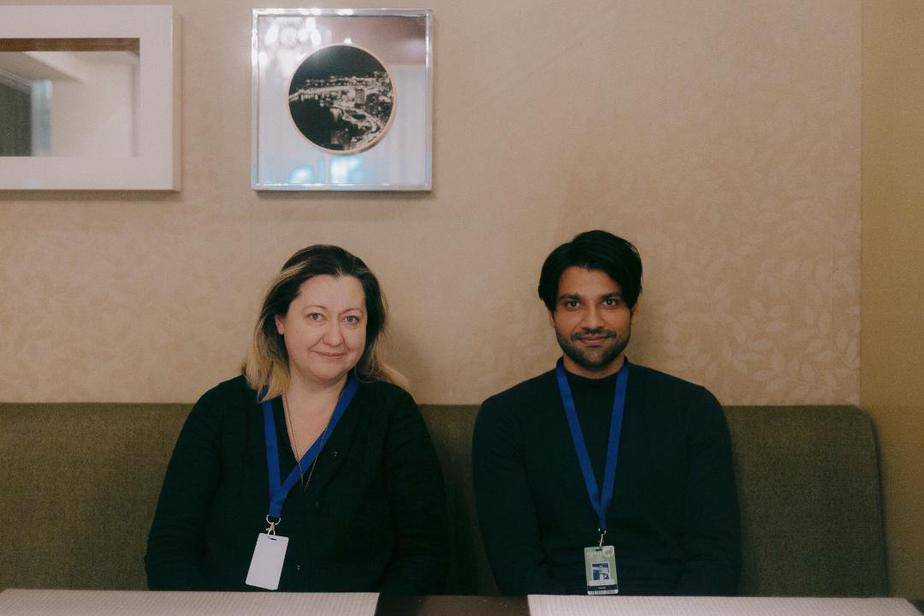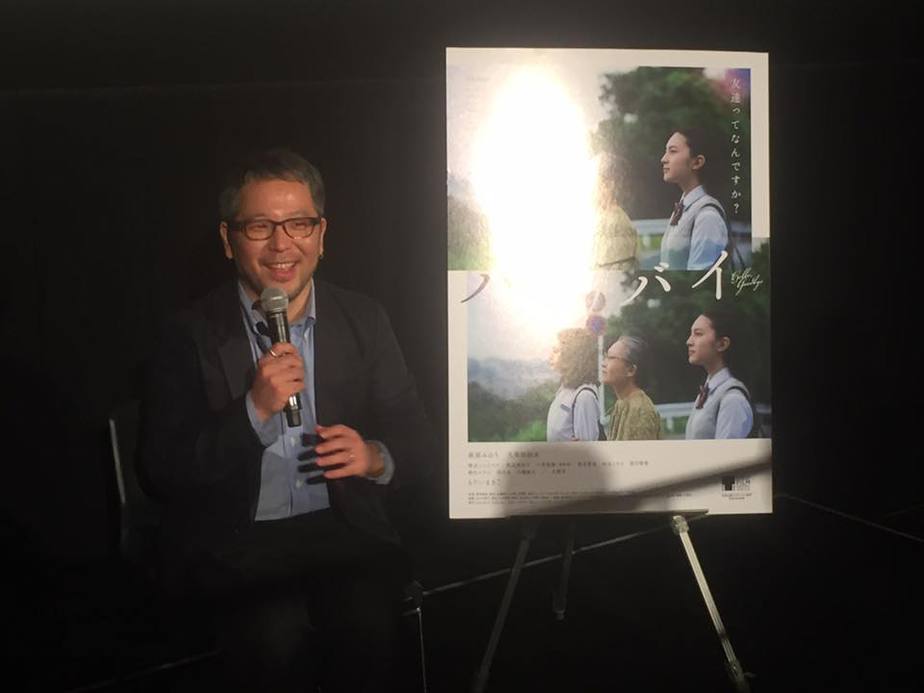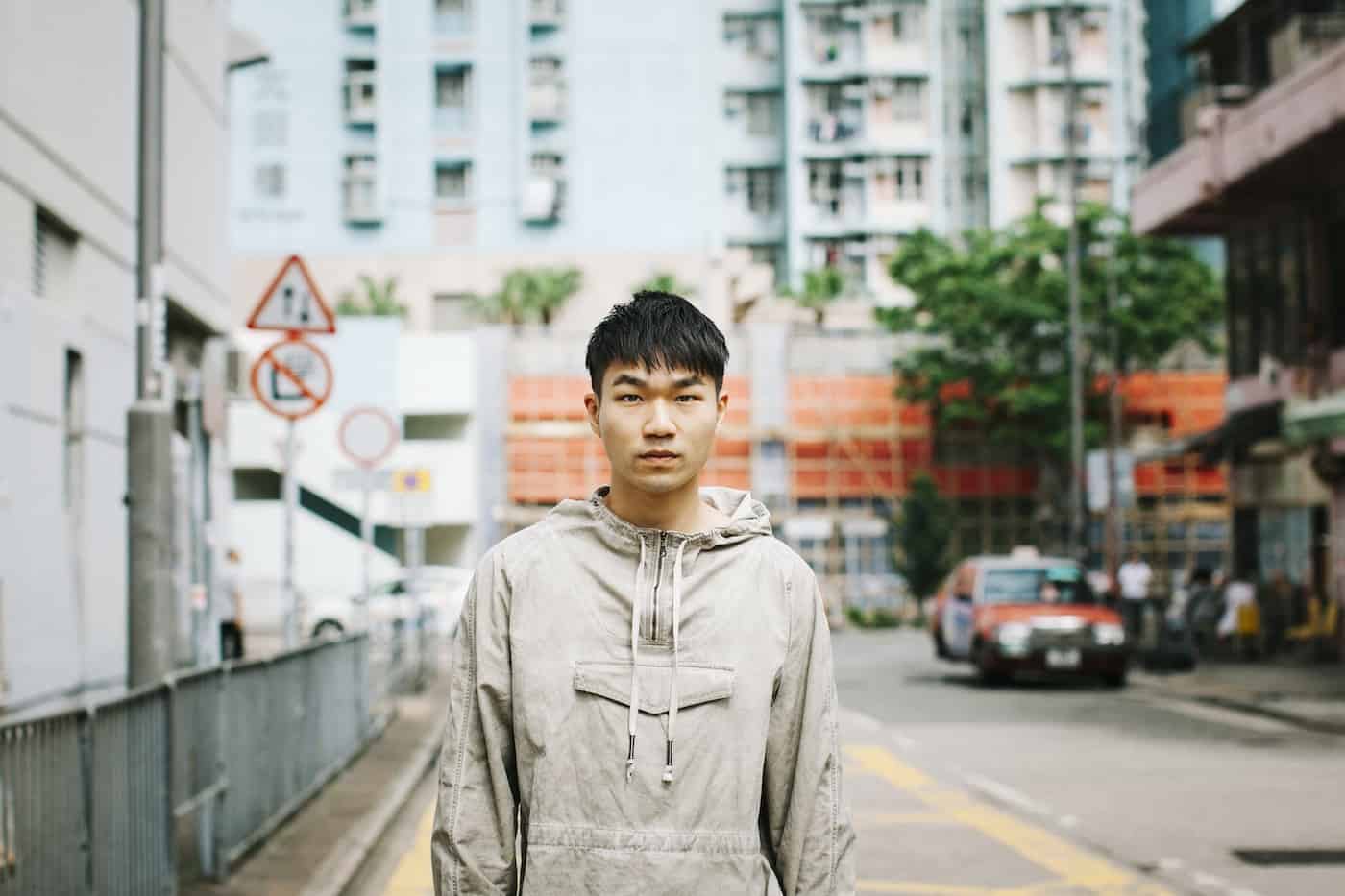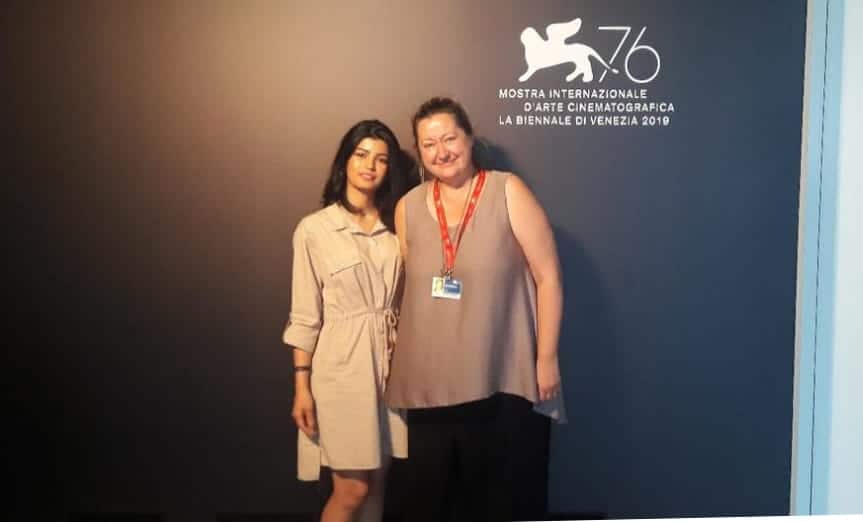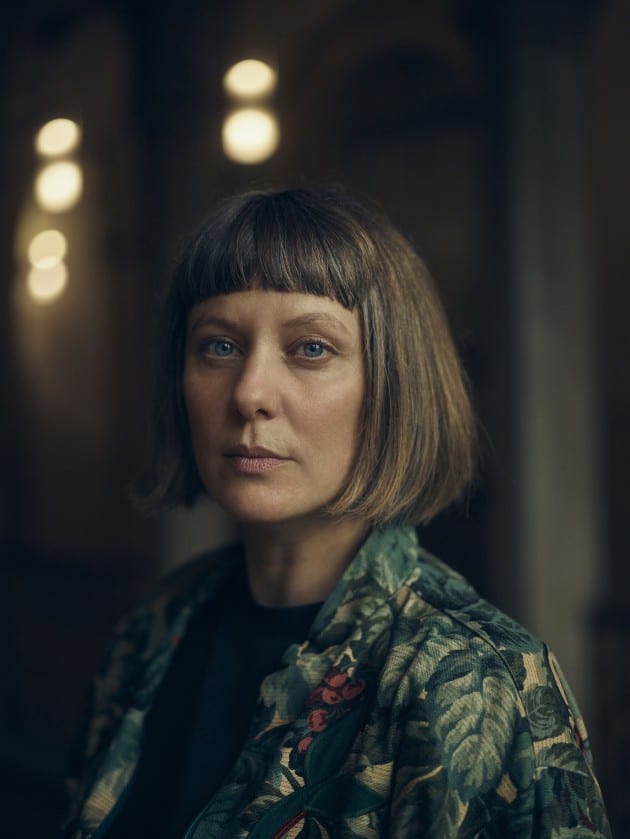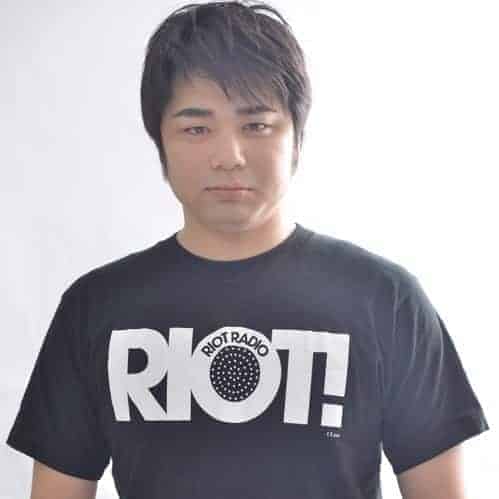Attention – spoiler alerts!
The big winner of PÖFF | Tallinn Black Nights Film Festival was Anshul Chauhan's film “Kontora” that took the Grand Prix for the best film (comes with a grant of 10 000 euros from the City of Tallinn), and the Award for the Best Music which went to the composer Yuma Koda “for the ability to create a state of continuous tension and references to the past through an extremely rigorous and modern orchestral writing.”

Visually stunning, “Kontora” is a black & white saga about highschooler Sora, who's dealing with the death of her beloved grandfather by studying his diary from the WWII. She believes that the precious artefact from the past, full of stories and drawings, could lead her to a treasure her grandfather left behind. At the beginning of her quest, her drunken father hits a mysterious – “backward” man by car and almost leaves him on the road. Sora saves them both by taking the man to her family home and turning him into an extended family member.
“Kontora” is a film that bridges the present with the past with lots of creative imagination. It's a story of many surprises that follow their own logic.
We sat down to speak to the film director Anshul Chauhan and his cinematographer Max Golomidov in Tallinn about the choices they made and the unusual photographic quality of “Kontora”, which, at moments, treacherously looks like animated.

First of all, how did you find each other and how did you know that you want to collaborate?
Chauhan: I made my first short called “Soap” and there is a local event in Tokyo where you can showcase short films, so I went there where I met Max.
Golomidov: I was there as the audience.
Chauhan: Since that was my first film and I was previously doing animation only, I didn't know anyone. We simply exchanged our contact information. Some months later, Max bought a camera and he started sending me some of the work that he did. He told me that he got himself a camera because he was eager to do something, and at the same time, I was working on a script.
So, you've jumped together into cold water so to speak.
Chauhan: Oh no, Max is more experienced, since he's done a lot of work in Estonia before. I knew that he was into documentaries, and I always wanted to work with a documentary cinematographer because I worked with two other directors of photography before Max, and they were of a kind of more commercial type.
Golomidov: But also, I remember the moment he said to me that he was finishing another short which came after “Soap”, and that he was looking for someone to do the colour grading. I told him that I am a colourist, and I offered him my help. While I was working on Anshul's short film, we started chatting and I told him that I was actually a DoP and that I was looking for someone to work with. That's when he told me he was about to shoot “Bad Poetry Tokyo” and my natural response was to ask him if he had a DoP and who was working with him on it.
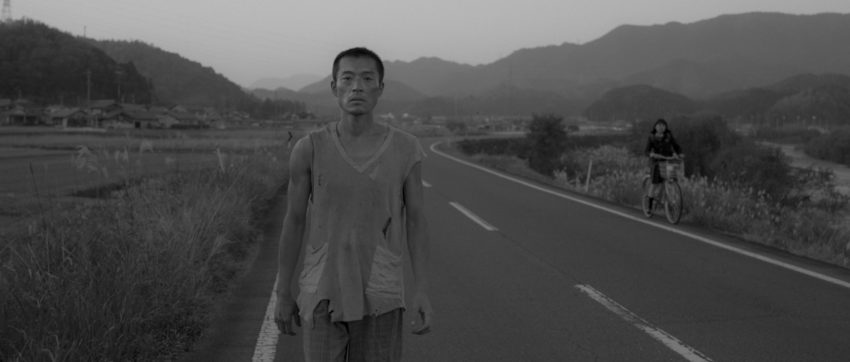
Which one of you decided that “Kontora” should be black & white?
Chauhan: It was a mutual decision. We wanted to do a B&W film together, so we did a test in colour and in B&W while location scouting for “Kontora”. But for me, it was important that if we are making a B&W film, that I also want to see it B&W on the monitor. Since we shot everything in colour for our first film, I thought that doing it that way this time wouldn't be a good idea to change it in post production. But also, “Kontora” had to be in B&W because I dedicated the film to the WWII soldiers and my grandfather.
Since one of your dedications goes to your grandfather, were you directly inspired by some of his experiences?
Chauhan: Actually no, because I never met him. He died few days before I was born. I was inspired by many different things that were included in the film. But the main event that I wanted to capture on the film is the digging of the box that is my family story. Since I had to find a connecter of sorts, I did a research and I found out that young people in Japan go out in the nature with metal detectors, trying to excavate WWII items. They dig them out, clean them and either collect or sell them, but not only in Japan actually, it's quite popular in many countries that were afflicted by the war. There is even a famous YouTube channel that shows kids who go to search buried WWII items.
There is one particular scene in the film in which the lead actress Sora is cycling through the woods, and which looks like animated. Is it?
Chauhan: No, it wasn't. We took a long take of that shot that was later cut in three parts.
Golomidov: We wanted to show Sora going deeper and deeper into the forest. We started from the light to the dark forest and Anshul has actually cut out the very beginning of it.
Chauhan: I dunno why it feel like animated, while shooting we were up on the truck and we didn't have a crane or such, and it was quite a bumpy road. May be due to use of gimbal on the truck and the bumpy road all together gave the feeling of something unnatural or animated.
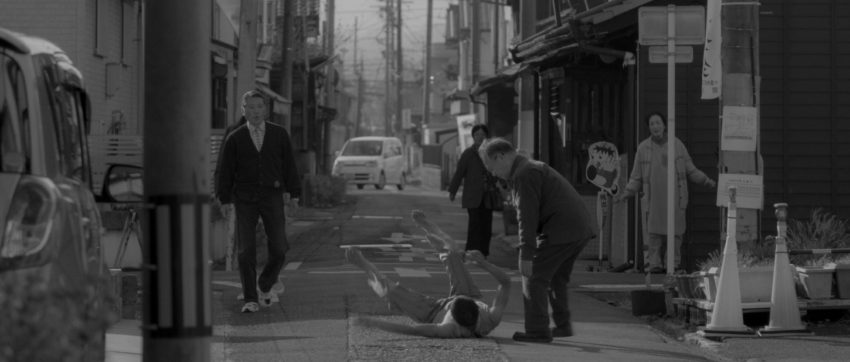
Your decision to start directing your own films. Where did it come from?
Chauhan: I am still an animator, but I wanted to create my own stories and I also know that it is impossible to make an animation film all alone. I know all the animation departments and how much work goes behind creating animation films. I took part in animation projects that took 3-4 years to finish. Even if I wanted to make a very short animation film, it would take me a year. For me it was clear that I want to make films on my own, but not animation, and I just started to learn the trade by doing it. I don't have a classical film education. One of the biggest motivations was that I was a part of a very big project in Tokyo for which we won an Emmy award – the whole team of animators, but the director was empty handed. The CEO went and received the award, who is a businessman and not the animator or the director. I didn't like that feeling and I found it really stupid. That's when I decided that I wanted to do something that I can put my name on.
Who is the “backward” man? For me, he was almost like a spirit seeking connection to the past.
Chauhan: He is somebody who is physically and mentally coming back to life. You can call it a spirit or ghost. I don't want to actually tell who he is. But almost everyone knows the answer after watching the film. They just want to confirm it with me. I would say, whatever you are thinking or guessing, is the right answer.
Foreigners making films in Japan. How does that work?
Chauhan: We didn't get any financial support, and we made the film by ourselves. Regarding the cast, I already knew everybody, so that wasn't a problem. With some of them, I've already worked during my previous projects. Some are stage actors who don't work on film. We were filming in Sora's father (Taichi Yamada's) house and village and that's how the second problem was solved. The only thing I did was to post an announcement on Facebook that I was looking for actors, which went pretty well. Everybody knew that my first film has won many Best Actor awards.
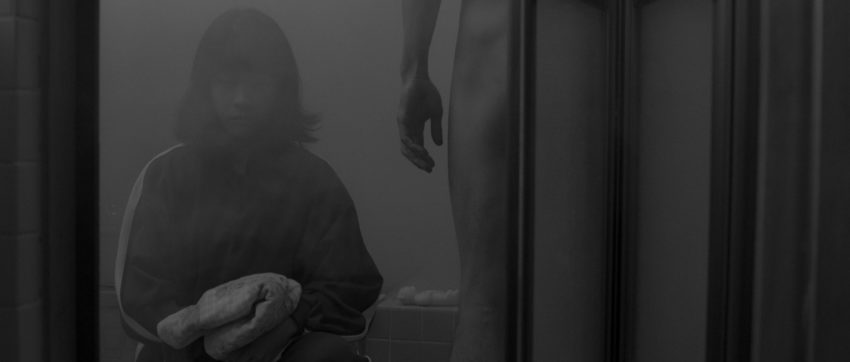
Was there any particular obstacle on your way to completing “Kontora”?
Chauhan: On the first day of shooting we had technical problems, our remote for gimbal stopped working.
Golomidov: Because of the steadicam. Your hands are occupied, and you can't focus. We needed somebody to operate follow focus.
Chauhan: We hired a 1st Ac Petter Moen Jensen.
Golomidov: The poor guy had to run all the time, touching the lens.
Chauhan: The other challenge was having Hidemasa Mase walk barefoot in that weather. We were putting tapes on his foot soles to make it more bearable for him. After every shot, we were wrapping him in blankets and those were the fastest shootings, although I wanted to do them in a different manner. I wish I could have more time.
Golomidov: From a DoP's point of view, I saw Anshul struggling to deal with actors who come from the classical Japanese school. They are told how to walk and where to stop, which was frustrating for him. He wanted them to be more spontaneous, to make their own decision where to stop, to improvise a bit. These were hard times for him. He didn't give any boundaries, but they wanted that.
Chauhan: New actors didn't have a sense for camera, because that's not easy to learn to simply joining the film project. They were showing their back to the camera again and again, blocking the view. It took us a couple of days to make them aware of the camera movement. We had only ten days to finish the film, and that's why that was an issue.
Golomidov: That was my fault. I was limited with schedule.
Since it is a very Japan-bound story, did you have any advisors?
Chauhan: No, but I was inspired by the letters from the WWII. I have personally selected 15-20 letters, most of them were written by the student soldiers who later became Kamikaze pilots. None of them wanted to do that but they were beaten up and forced to perform their military “duty”. The opening page of grandfather's diary is like that, if you remember. His friend was beaten up and hospitalised. I wanted to show this from a diary perspective, because I couldn't afford to shoot the actual war scenes. Every single word from that diary was taken from preserved letters from WWII. Also, one of the reasons I took Hidemasa Mase to play the role of the backward ma, is that he is an amazing artist and all the drawings in the diary were by him. There is a very emotional scene when he picks up a diary and you can see that he is genuinely surprised and moved. That's because I didn't tell him that his drawings were going to be in it and I shot the scene without altering it in any way. There is no cut until he stops crying. Max's camera was also shaking because it was a very long take and he could not handle the weight of the camera till the end. The decision was risky, because he, as the character he's playing, is not supposed to show emotions. I feel that he is more artist than actor and it took us a long time to get it out from him. He would come to my house and we would discuss about everything film related. I showed him where to draw what, and he even wrote that diary. Also the last portrait in the film, the one he gives as the backward man to Sora, is the drawing he did on the set between the takes.
What is with the rifle?
Chauhan: One of the reasons to make this film is that I always wanted to use guns in a movie. But guns are banned in Japan and guns look so fake in a Japanese film, also in terms of how people are holding them. I am not counting the yakuza movies. The rifle in Kontora is the original replica of the arisaka rifle used in WWII. There is a shop in Ueno Tokyo- I went there and the guy asked me what I needed. When he showed me the rifle, it was incredibly realistic. Everything was right: the weight, the metal, the wood. It just had a small metal chip inside stopping it to be a real rifle. I was immediately attracted to the rifle and I know lots of things about weapons, because I am from military background. We gave the rifle to the actors to practice shooting. When they are struggling with the rifle in the film, it's authentic, because it was their first actual contact with firearms.
Golomidov: The scene at the end when Sora is shooting from the cliff was quite dangerous. Not only the weapon was heavy for her, but she was quite high up. We had to tie her with ropes in case anything happens. We were laying behind her, trying to prevent any kind of accident. For me it was super scary, and I could barely stand looking at her. Add to it shooting the rifle and trying to keep the balance. We shot the scene from three angles.


